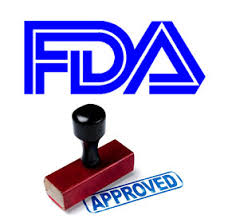- Home
- Editorial
- News
- Practice Guidelines
- Anesthesiology Guidelines
- Cancer Guidelines
- Cardiac Sciences Guidelines
- Critical Care Guidelines
- Dentistry Guidelines
- Dermatology Guidelines
- Diabetes and Endo Guidelines
- Diagnostics Guidelines
- ENT Guidelines
- Featured Practice Guidelines
- Gastroenterology Guidelines
- Geriatrics Guidelines
- Medicine Guidelines
- Nephrology Guidelines
- Neurosciences Guidelines
- Obs and Gynae Guidelines
- Ophthalmology Guidelines
- Orthopaedics Guidelines
- Paediatrics Guidelines
- Psychiatry Guidelines
- Pulmonology Guidelines
- Radiology Guidelines
- Surgery Guidelines
- Urology Guidelines
FDA approves first spinal device for treatment of children with idiopathic scoliosis

In a first, the U.S. Food and Drug Administration has given approval to Zimmer Biomet Spine's spinal tether device for the treatment of idiopathic scoliosis in children and adolescents.
The device called The Tether – Vertebral Body Tethering System, is given to the patients who do not respond to conservative treatment options, such as external bracing. It is intended for the treatment of growing children and adolescents whose spinal curves are approaching or have reached the range where surgical treatment is an option.
Idiopathic scoliosis is a sideways curvature of the spine whose cause is unknown. It is the most common spinal deformity in children and is most often diagnosed between ages 10 to 18, although it may occur at a younger age. The standard treatments for idiopathic scoliosis among children and adolescents who are still growing are conservative, non-surgical treatments such as external bracing to help correct the spinal curvature.
“Today’s approval provides access to a new treatment option that could improve quality of life for patients with idiopathic scoliosis," said Raquel Peat, director of the Office of Orthopedic Devices in the FDA’s Center for Devices and Radiological Health, said in press release of Food and Drug Administration.
The Tether – Vertebral Body Tethering System provides an alternative for patients with idiopathic scoliosis that doesn’t respond to bracing. As a patient grows, The Tether – Vertebral Body Tethering System is designed to continue to correct the curvature while maintaining a fuller range of motion when compared to spinal fusion procedures.
The Tether – Vertebral Body Tethering System includes anchors and vertebral body screws that are placed into the same side of each vertebra in the curved section of the spine through an incision on the side of the chest. A flexible cord, called a tether, is connected to the screws. Tension is applied to the tether during surgery to compress one side of the spine and to partially correct the curve. Over time, the tether slows growth on the curved side of the spine and promotes growth on the opposite side. This provides additional correction of the curve as the patient continues to grow. The Tether - Vertebral Body Tethering System is not intended to be removed unless certain problems, such as overcorrections, develop. Health care professionals will monitor patients, conducting follow-up x-rays, to track the spinal curvature and identify any potential problems that might require additional surgery to revise or remove the device. For those patients whose curves are not adequately corrected by The Tether – Vertebral Body Tethering System, spinal fusion surgery is still possible.
The Food and Drug Administration reviewed data for The Tether – Vertebral Body Tethering System through the humanitarian device exemption (HDE) process. A Humanitarian Use Device (HUD) is a device intended to benefit to patients by treating or diagnosing a disease or condition that affects not more than 8,000 individuals in the U.S. per year.
The Food and Drug Administration reviewed clinical data supporting the safety and probable benefit of The Tether – Vertebral Body Tethering System from 57 patients who received the device. At two years, 43 patients had sufficient improvement of the curvature of their spines and did not need spinal fusion. The most common serious adverse events observed included overcorrection of the curvature, tether breakage, and pneumothorax or air leakage into the space between the lung and chest wall. General complications consistent with any spinal surgical procedure were also noted including pain, respiratory problems, nerve injuries and bleeding.
Zimmer Biomet Spine has shared with the FDA that it will be partnering with the Harms Study Group, a cohort of surgeons dedicated to the advancement of treatment for children and adolescents with spinal deformities, to develop a patient data registry to help assess the long-term performance of The Tether System.
“The Food and Drug Administration continues to collaborate with stakeholders to encourage the development of registries, including the one being developed for this device, as an additional tool to gather and track real-world evidence,” said FDA Principal Deputy Commissioner Amy Abernethy, M.D., Ph.D. “This type of post-market data generation can provide ongoing device safety surveillance and additional evidence for effectiveness. More broadly, real-world evidence can help support innovative developments while ensuring that patient health and safety remains the top priority.”

Disclaimer: This site is primarily intended for healthcare professionals. Any content/information on this website does not replace the advice of medical and/or health professionals and should not be construed as medical/diagnostic advice/endorsement or prescription. Use of this site is subject to our terms of use, privacy policy, advertisement policy. © 2020 Minerva Medical Treatment Pvt Ltd